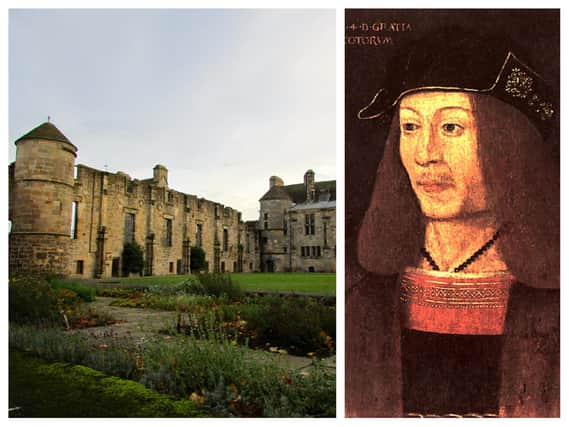The Africans who came to Scotland in the early 16th Century


It’s often assumed that African people arrived in Scotland in the 18th century, or even later. But in fact Africans were resident in Scotland much earlier, and in the early 16th century they were high-status members of the royal retinue.
This is clearly recorded at the court of James IV (1473–1513). One African, ‘Petir the Moryen’ (Peter the ‘Moor’) seemed to have had a special relationship with the king – he was free to travel and was given five French crowns at the king’s request for a journey to France.
Advertisement
Hide AdAdvertisement
Hide AdJames IV was an enlightened and cultured ruler who, from 1501, continued the transformation of his old castle at Falkland into a beautiful Renaissance royal palace. Falkland became a popular retreat for the Stewart monarchs. They used the surrounding forests for hawking, and hunting deer and wild boar.
In September 1504, James IV was entertained at Falkland by fiddlers, lutists and an African drummer. The unnamed African drummer also travelled with the king. He had been present on the king’s raid in Eskdale earlier that year and, together with ‘four Italien menstrales’ (Italian minstrels), was taken to provide entertainment at visits to Peblis (Peebles), Dumfreis (Dumfries), Brechin and Faulklands (Falkland), where lodgings were paid for him.
The drummer had a family and in the court records there’s mention of a payment to the ‘More taubronaris wif and his barne’ (the African drummer’s wife and child).
On 25 January 1503, James IV married Margaret Tudor (1489–1541), daughter of the English King Henry VII. Three years later, in 1506, when two enslaved African women arrived in Leith, they were presented as ‘gifts’ to King James IV. According to contemporary records they had been rescued (more accurately seized) from a Portuguese ship by Scottish privateers, the Barton brothers.
Andrew and Robert Barton were Scottish sailors from Leith who imported valuable cargo for James IV, including blue damask cloth and timber for the ceiling of the chapel at the Palace of Holyroodhouse in 1504. The brothers furthered this royal patronage by presenting the two African women to the king. The ploy worked. In July 1507, James IV revived the practice of issuing a letter of marque, granting the Bartons the right to seize Portuguese ships and their contents (the brothers’ privateering father John Barton had been issued with a similar letter by James III in the 1490s).
The ‘Moorish lasses’ were presented to King James IV, ‘who not only accepted the gift but took the greatest interest in their welfare’ and they were incorporated into the queen’s household. They were later converted to Christianity and baptised as Margaret and Ellen (or Helen), their real names and country of origin lost to history. One of the women, probably Helen, became one of Queen Margaret’s attendants and was described as the ‘Quenis blak madin’.
She was awarded the favoured position, reserved for the most beautiful lady of the court, of becoming the lady of the ‘tournament of the black knight’, with King James IV overcoming opponents to win her hand.
For the full article, visit www.nts.org